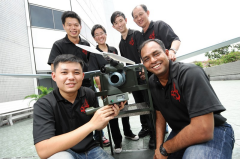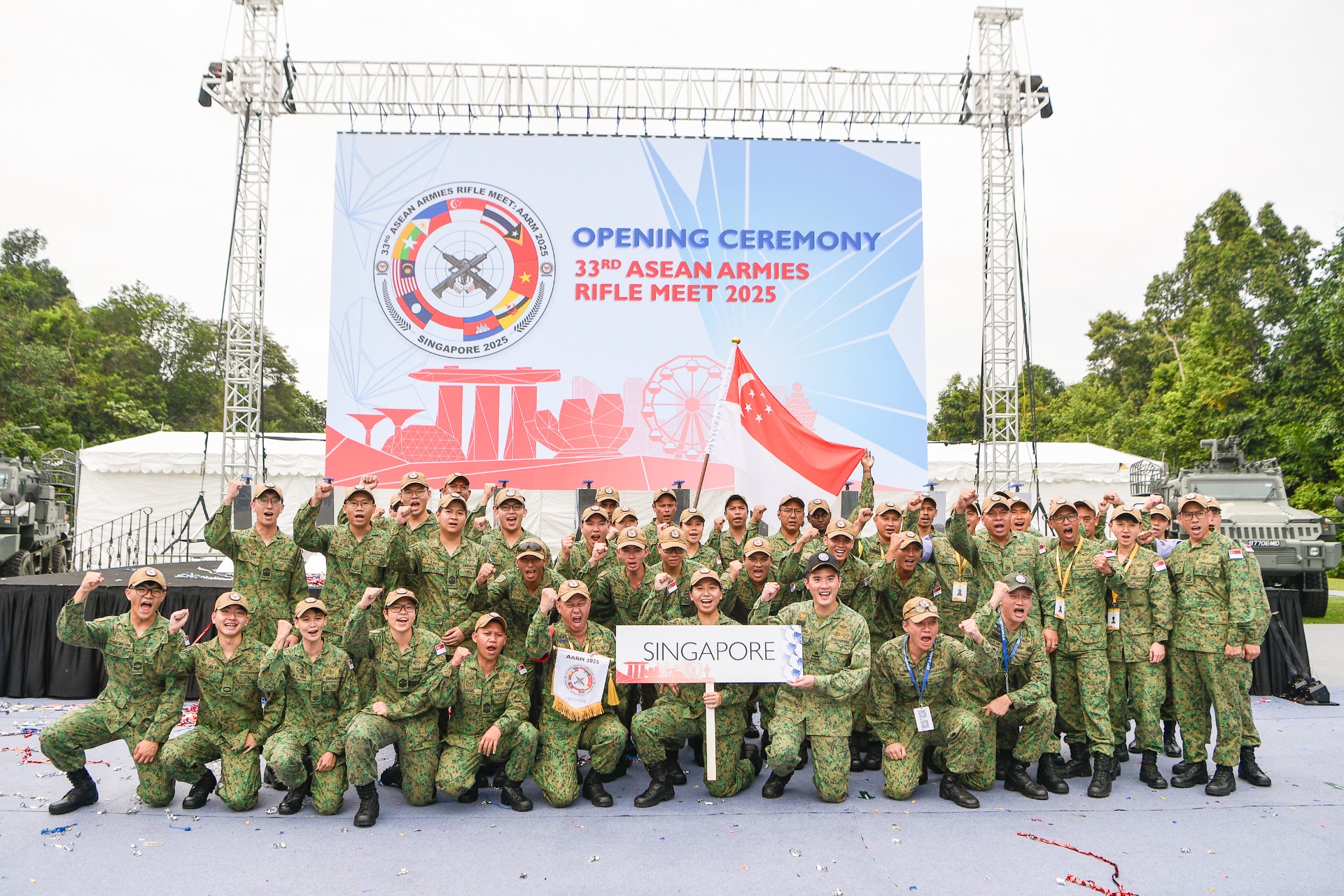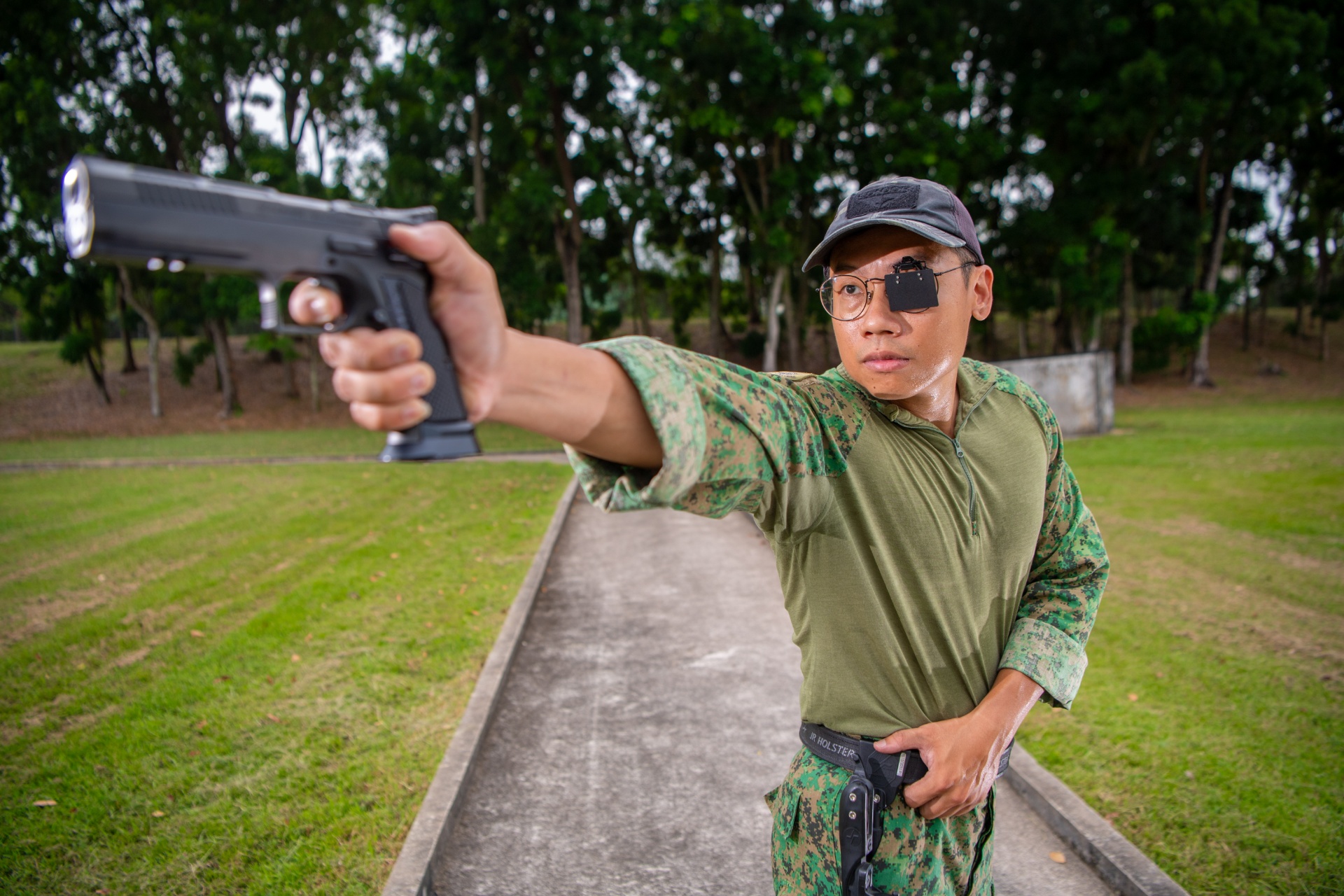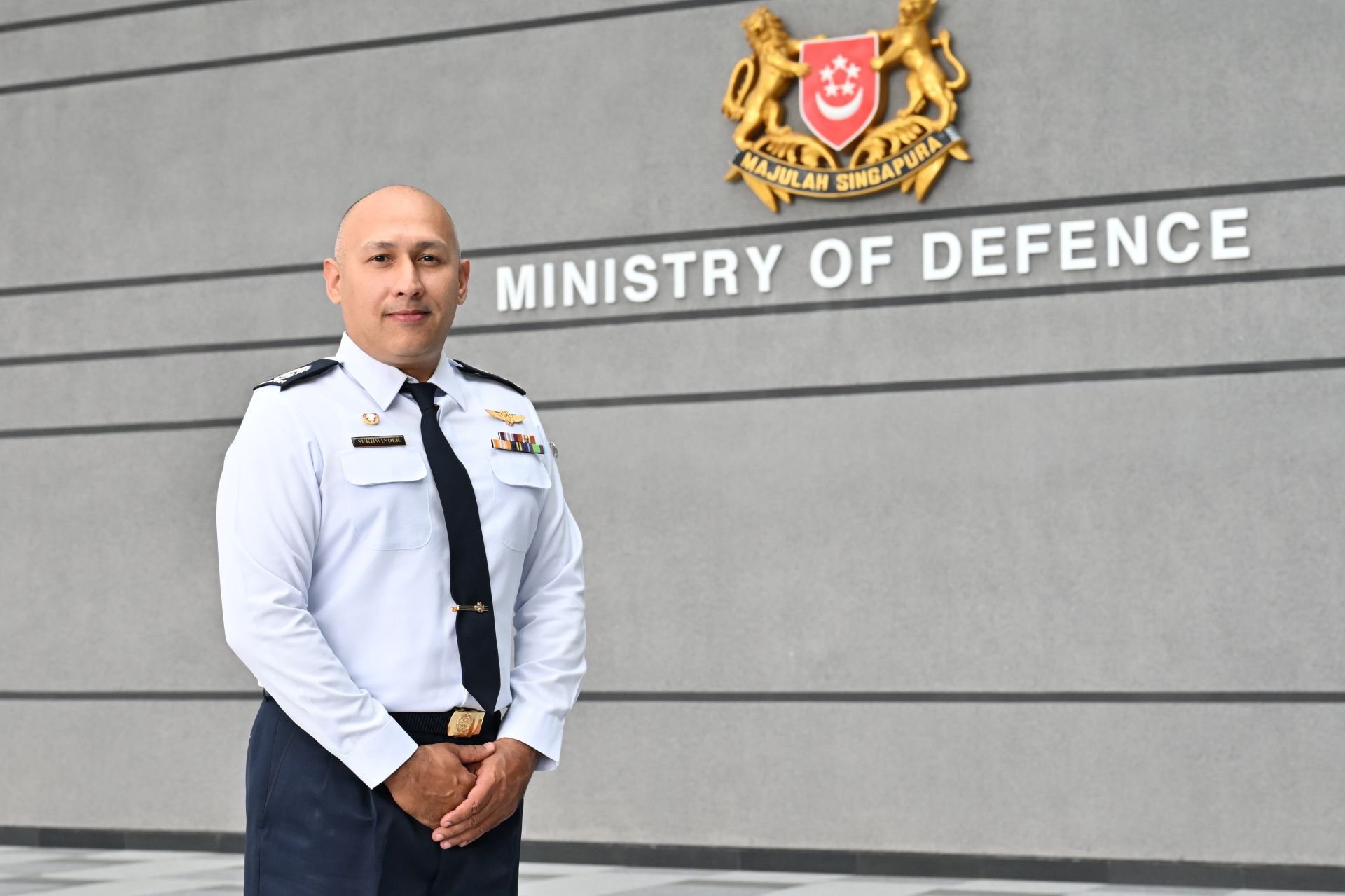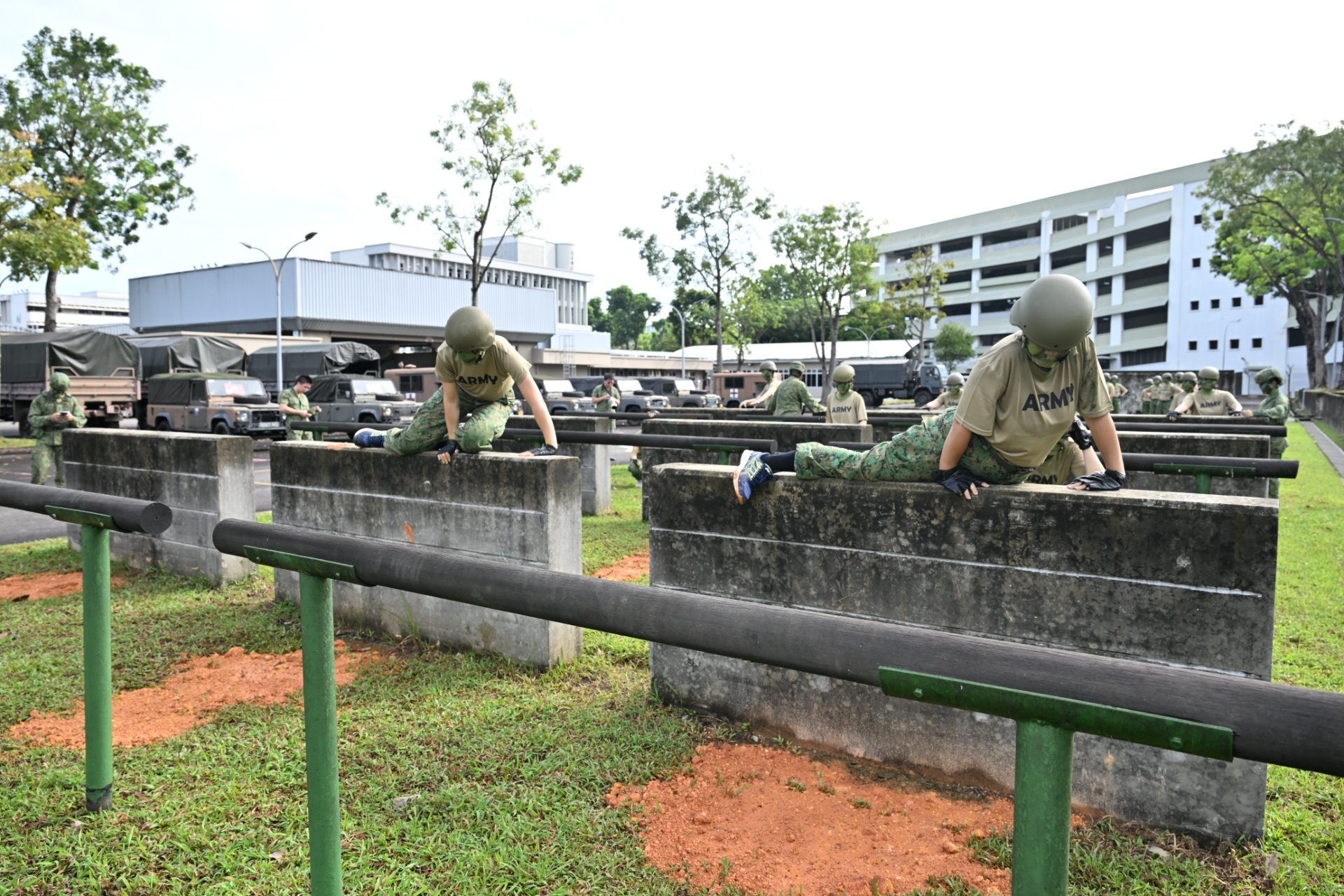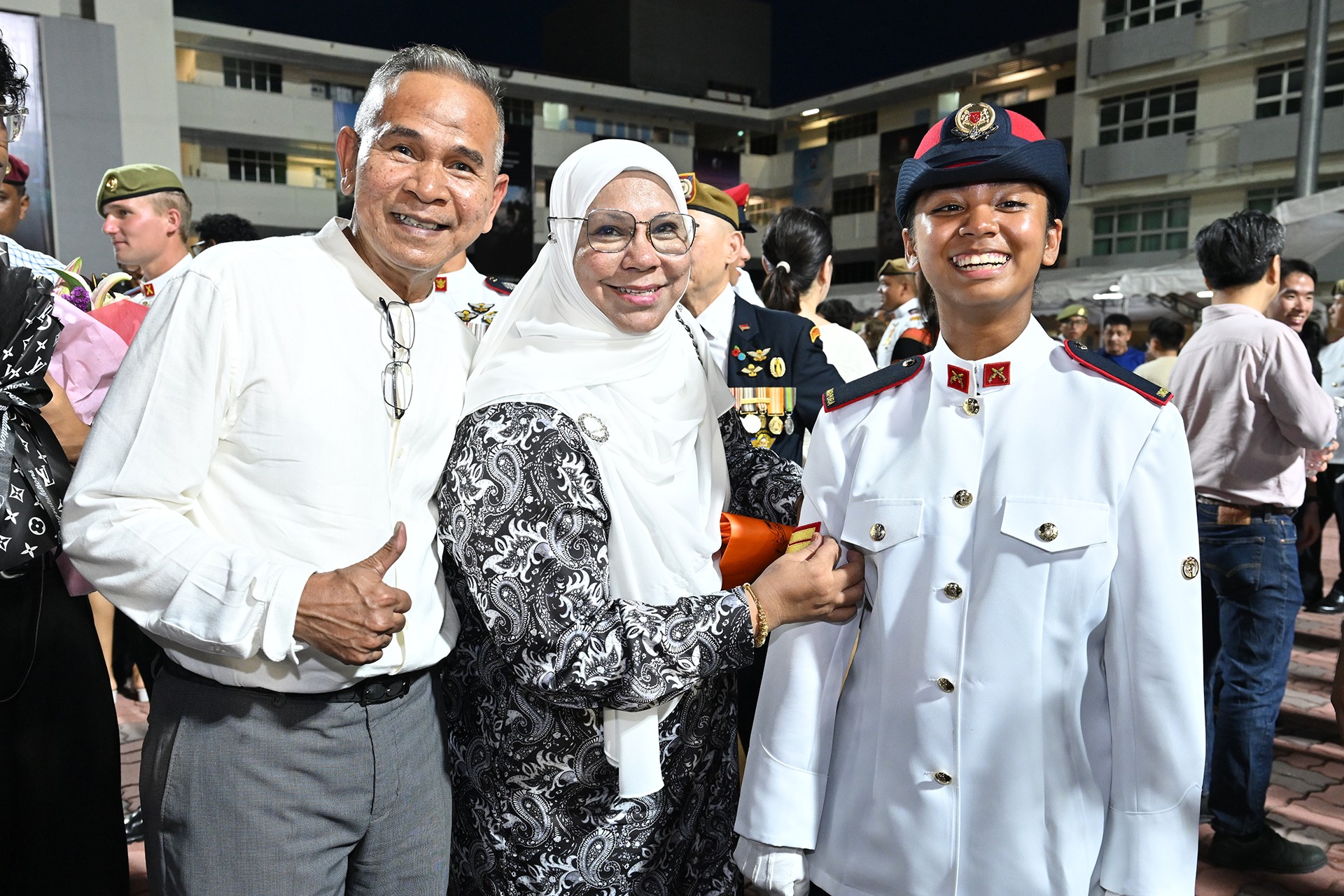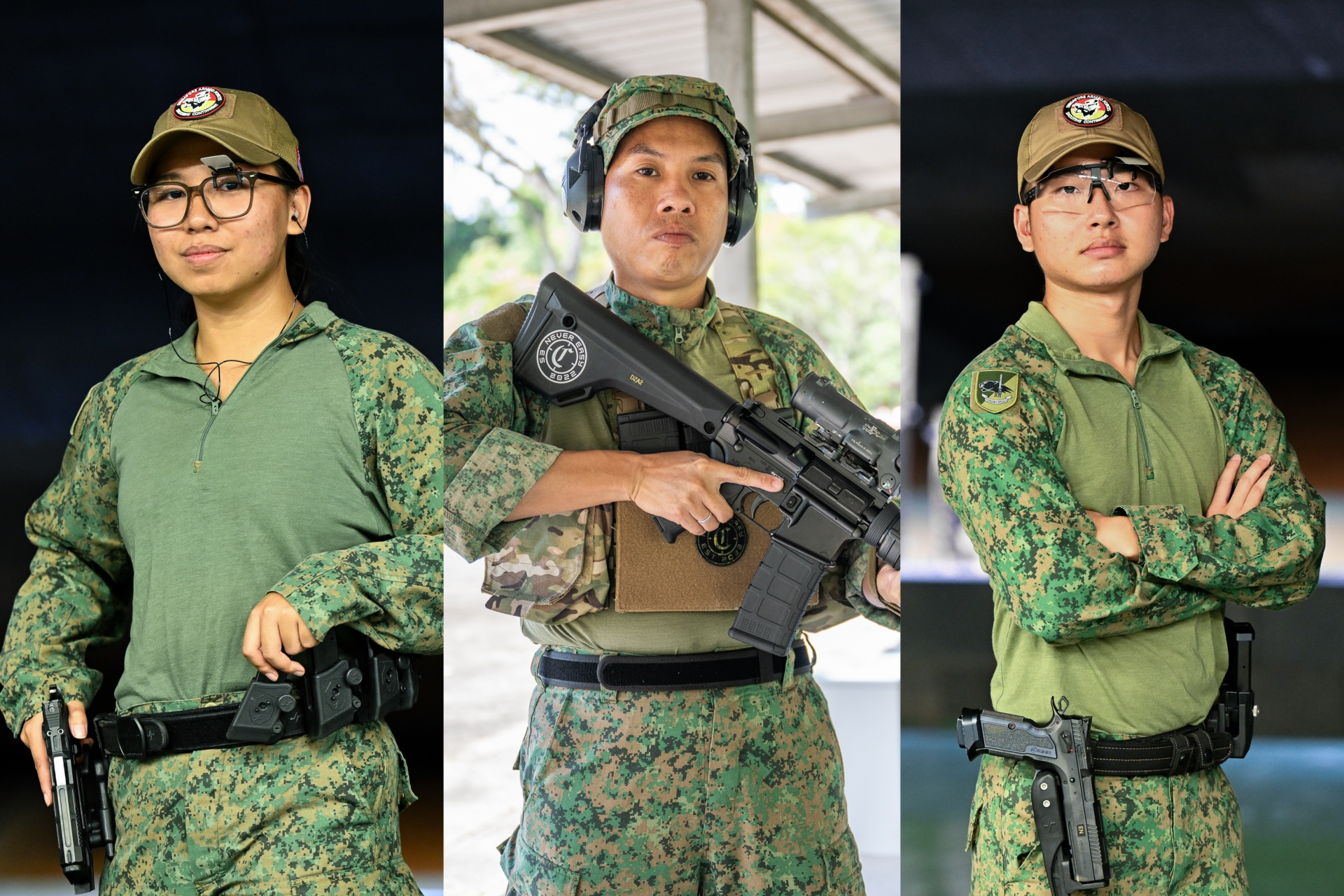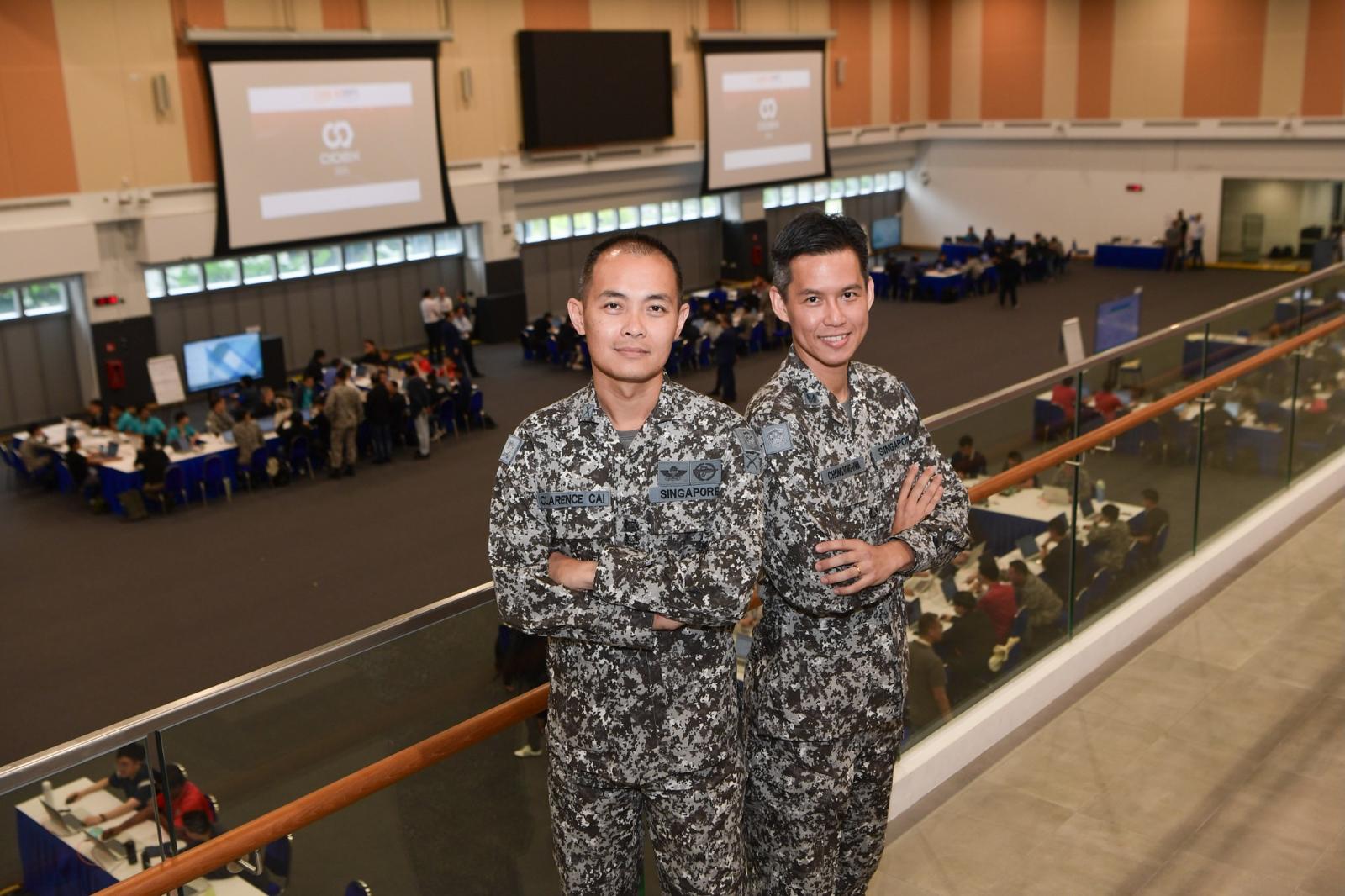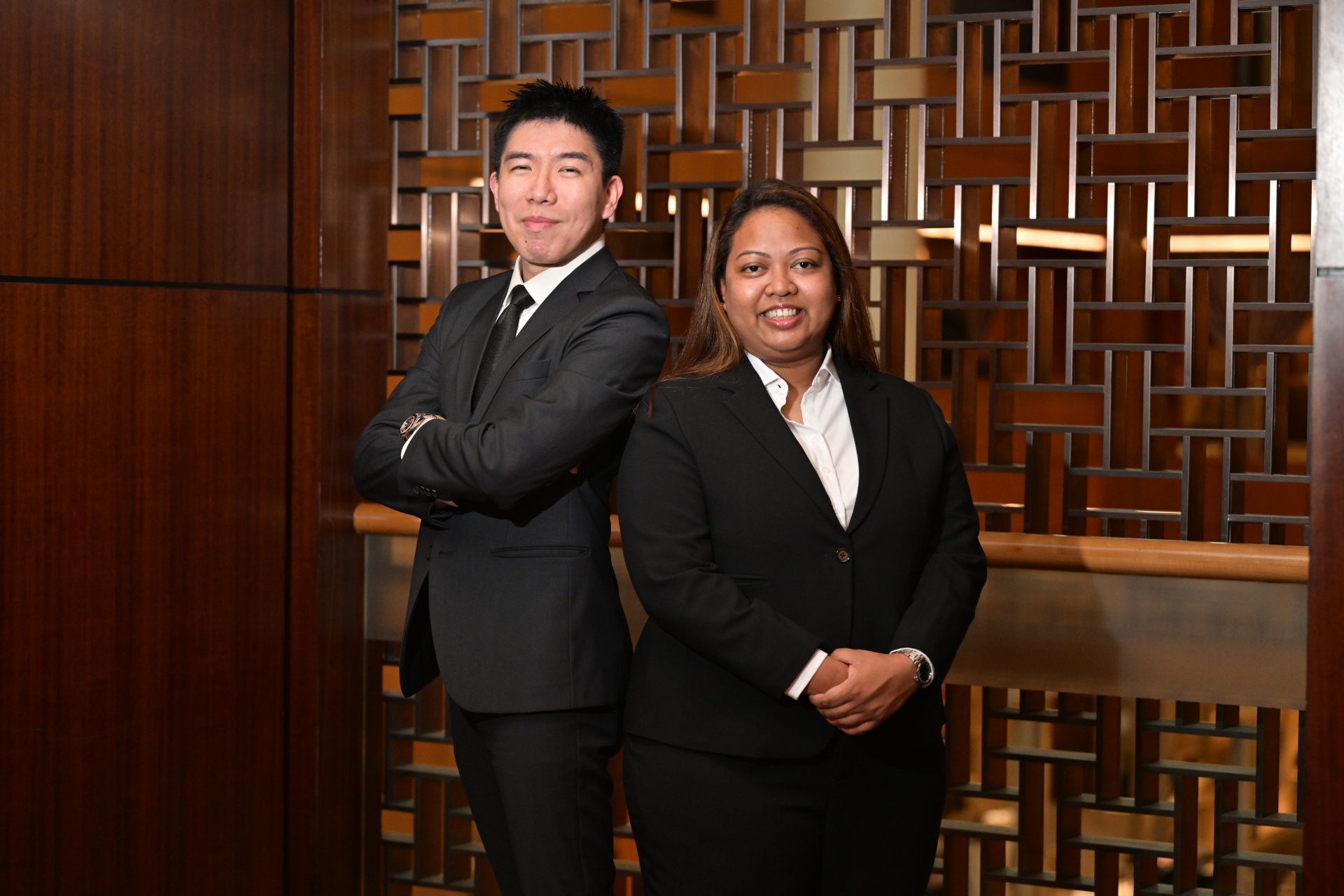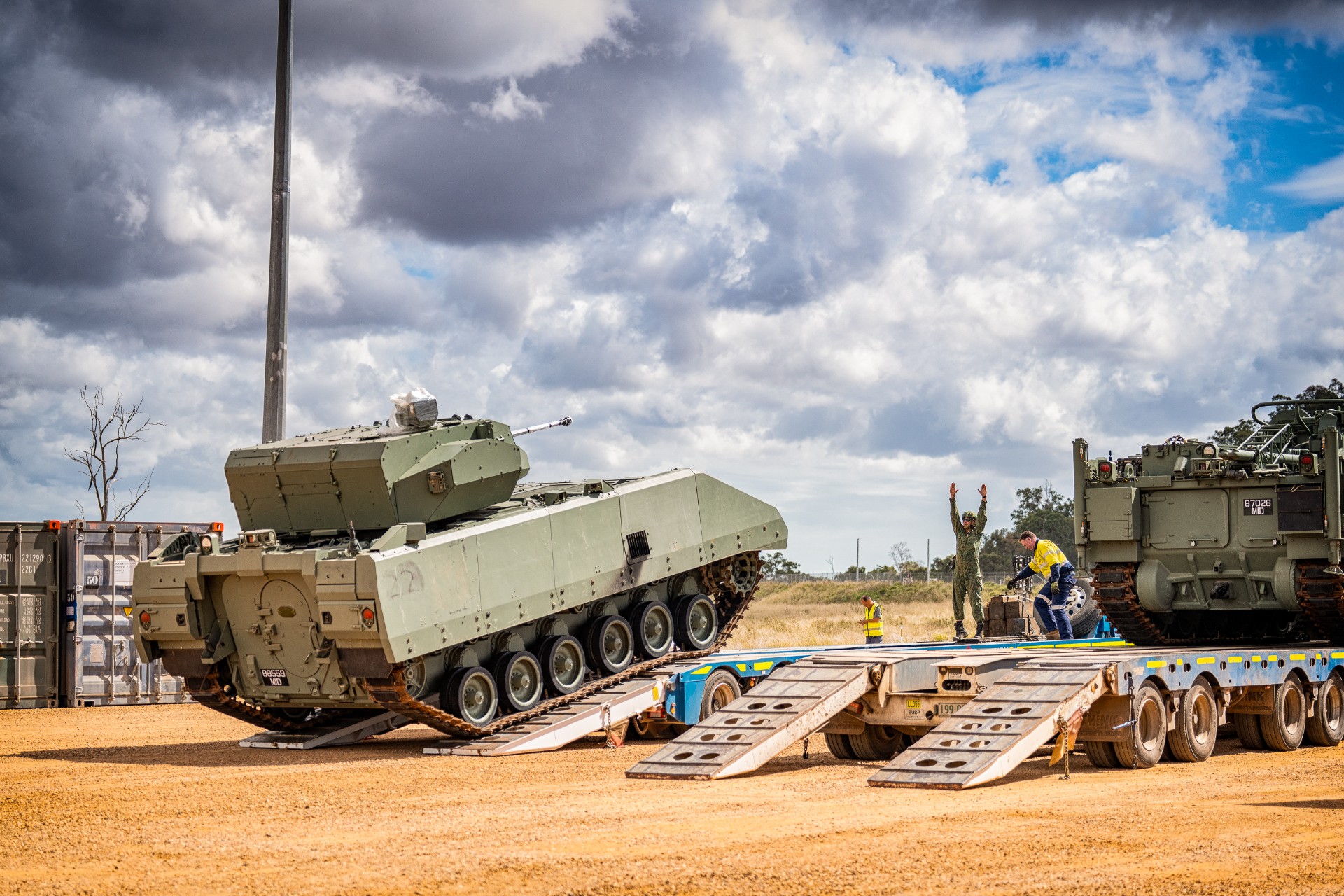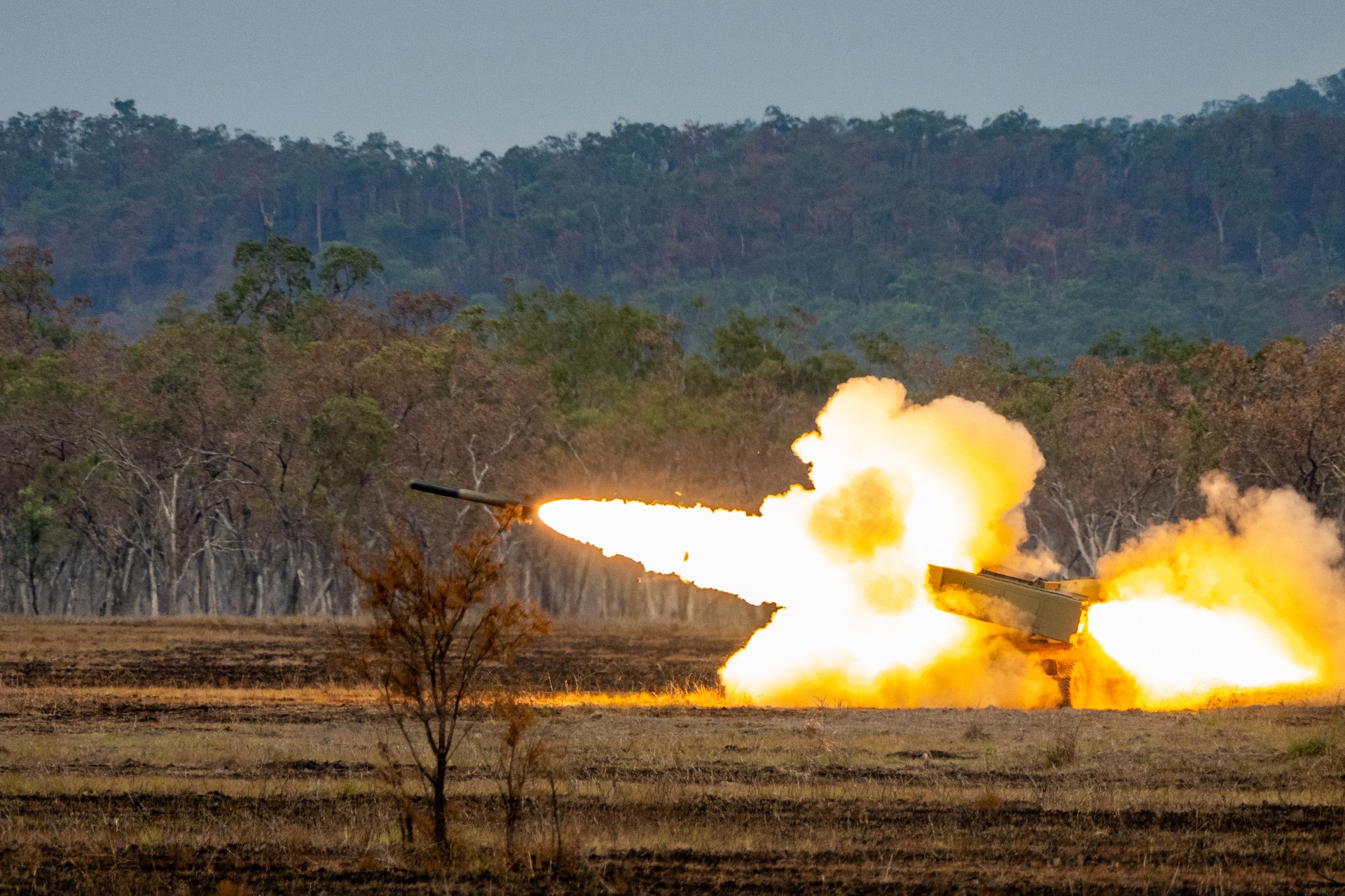IDEAS FOR A BETTER SAF
PHOTO // Chai Sian Liang
A sampling of three projects which have enhanced the way the Singapore Armed Forces (SAF) works, made possible by the PRoductivity and Innovation in Daily Effort (PRIDE) movement.
For 31 years now, the PRIDE movement has been fostering a culture of innovation and generating ideas from ground units which has improved how the SAF works.
"As the SAF continues to operationalise its 3rd Generation capabilities, we will need to generate greater operational capacity through efficiency and innovation," said Minister for Defence Dr Ng Eng Hen at last year's MINDEF PRIDE Day award presentation ceremony.
Come 24 May, the PRIDE movement will continue that tradition and showcase its latest innovations at the Army Open House (AOH) 2012 held at the F1 Pit Building. For the busy bees who will not be able to check out the PRIDE exhibits at AOH 2012, here are some of the best of this year's PRIDE projects.
KEEPING COOL
Project: Cooling Kit for Skyblade III
Unit: 6th Army Maintenance Base
In the military, operational requirements leave no room for failure or delays. For this reason, the Skyblade III Unmanned Aerial Vehicle (UAV) is always put through a comprehensive pre-flight check before it is flown.
During the 10-step pre-flight check, the UAV is stationary and a chip within the Flight Control Card (FCC) is deprived of cooling air driven through the fuselage via small openings during flight. Combined with adverse operating weather conditions and high amounts of data processed, it may then overheat.
When that happens, UAV maintenance crew members have to remove part of the fuselage and wait for the FCC to cool before restarting the checks. That was when personnel from the 6th Army Maintenance Base (6AMB) began to think of ways to achieve good air flow to cool the FCC while preparations for take-off are being done.
"We took reference from computers which have cooling fans driving air over the internal components," said Military Expert (ME) 2 Muthukumaran, a Master Tech Trainer from 6AMB.
"The UAV is quite small and the ventilation grill is also small, so we really had to design something which fitted exactly over the fuselage yet delivered enough cool air," explained ME2 Muthukumaran. After months of deliberation, the team came up with a U-shaped design.
Getting the right amount of cooling was the next thing that the team looked at.
That meant many trial sessions before the team arrived at a fan coupled with a lithium-polymer battery that delivered what they were looking for.
Adding a battery analyser to show the remaining battery life finally completed the cooling kit.
MAKE IT MOBILE
Project: Field Tester for
Triple Ejector Rack (TER) 9A
Unit: 805 Squadron
For the Republic of Singapore Air Force (RSAF) fighter squadrons, a dud click when firing munitions is a professional taboo. That is why all equipment is checked before each sortie to ensure that it is all systems go even before take-off.
This is especially so for the TER-9A system, which is what pilots rely on to drop their munitions while in mid-flight. With mounting points for three bombs, the TER-9A system used on RSAF F-16 fighter aircraft is subjected to a rigorous testing process to ensure that each of the three mounting points works as designed.
To do that, the ground crew relied on a manufacturer-provided test kit which needed specialised power supply. That meant they had to transport the TER-9As to the workshops from storage in order to conduct checks.
"We decided that we had to replicate the way which the aircraft would interface with the TER-9A for the most accurate test results," explained ME3 Ronnie Lau, Workshop Section Warrant Officer, 805 SQN. For example, the field tester kit uses actual cables and connectors which the aircraft uses to "tell" the TER-9A when to release the munitions. "By doing that, we ensured that the TER-9A will respond the same way to the controls as to our tester kit," he explained.
One of the parts they had to fabricate was a voltage sensor, which acts as an indicator of whether the TER-9A is fully functional. Basically, the lightweight field tester kit sends an electrical impulse through the TER-9A and if everything is working, the indicator would light up.
"With this tester kit, we are able to test all the functions which the TER-9A is designed to do wherever there is a domestic electrical supply," explained ME3 Lau. There are plans to add a battery pack to the field tester kit, so as to make it even more portable.
ENHANCING READINESS
Project: New process of Deck casing removal in harbour
Unit: Force Generation Squadron, Submarine Maintenance Engineering Centre (SMEC)
Before the advent of this project, maintenance crew working on the Republic of Singapore Navy's submarines faced near to three weeks of having the ship out of action as they carried out corrective maintenance procedures.
In order to access the rear sections of the submarines, they had to dock the boat out of water and erect various safety structures before they could remove the deck casings to work on the systems underneath.
That led the team to think of a structure which could sit over the submarine and provide a safe working platform for the working group to stand on while removing the fasteners which held the deck casings to the submarine.
"The deck casings need to be removed whenever the crew reports a defect where there is a requirement to carry out trouble-shooting of the systems and diagnose the defects beneath the casings," explained ME3 Selvan K, Lead Engineer (Structure), SMEC.
"Accessibility beneath the casings without removal is limited and crawling in that tight space could lead to further damages if the working group steps on associated system lines unintentionally."
With the new platform, the time taken to complete the same task has been reduced by 10 days.
